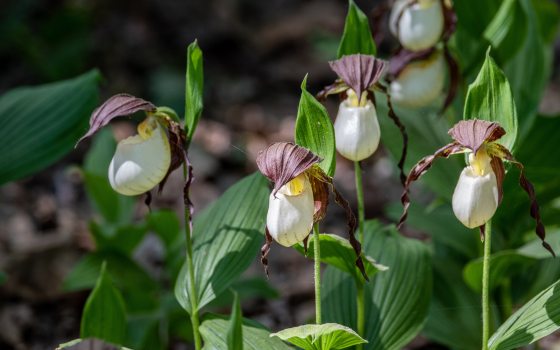Editor's Note: Our Longwood Seasons brews are served in our Beer Garden as well as select Victory Brewing Company locations. Availability varies seasonally. Find out more about our Beer Garden.
For the past several years, we have been working closely with Victory Brewing Company to create a unique collection of botanically-inspired beers. While some of the ingredients used in flavoring these beers have come to us from around the world, others were grown right here at our Gardens. All, however, possess rich botanical histories that have imbued these beers with a unique character (and flavor!) that is quintessentially Longwood. Get to know our brews better by taking a closer look at some of the plants essential to our brewing process.
Hops
There are four main ingredients of beer that comprise the brewing “quaternity”—water, yeast, malt (traditionally barley), and hops. Other ingredients can be added to a beer to improve its flavor, color, or scent—including various fruits (or “gruits” in brewing terminology), herbs, and spices.
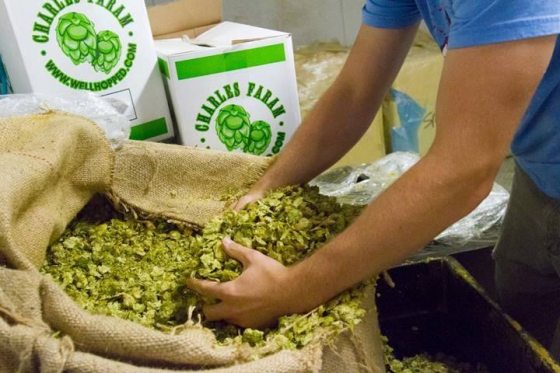
Hops are the fragrant, green, cone-like flowers of the perennial hop bine (yes, bine—not vine!), Humulus lupulus. Hop plants are dioecious, meaning that there are male and female plants, and only female plants are able to produce the flowers that are used in brewing. Like all bines, Humulus lupulus is primarily self-supporting (as opposed to vines, which climb via tendrils or suckers) and spiral clockwise as they follow the sun skyward.
Hops were introduced into the brewing process by medieval European monks to improve the quality of their beer. While hops are most commonly used today as a bittering agent, they also aid in head retention and lengthen the shelf life of the beer through their potent antibacterial properties.
Malts
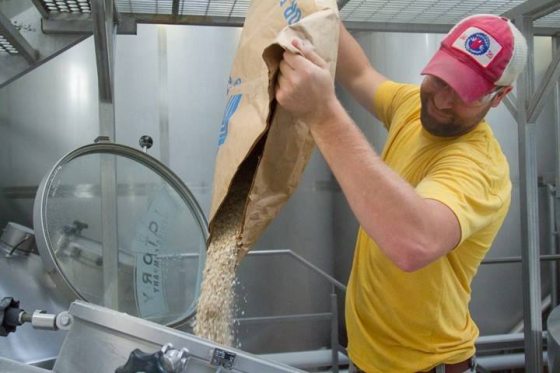
According to the series of German beer purity laws (the Reinheitsgebot, which has been enforced since the 16th century), the only “true” malt that can be used in brewing beer is barley. However, as far as yeast—the microorganisms responsible for creating alcohol—is concerned, any starchy cereal grain will do. All malts are essentially cereal grains, which is to say that they are the starch-filled seeds of various cultivated members of the grass family (Poaceae). Rice, rye, wheat, barley, oats, and corn can all be used as a starch source for brewing, though the strength and flavor of the beer will vary greatly on the species and varieties used. For Longwood’s beer, Victory used a variety of malts, including barley, wheat, and oats, to provide a rich flavor profile that complements the bitterness of the hops and the sweetness of the gruits.
Strawberries

Longwood Seasons: Summer Strawberry is the latest creation to come out of our collaboration with Victory. The strawberries used in the brew were grown right here in our Idea Garden. Strawberries (Fragaria x ananassa) are hardy perennial plants that are easily grown worldwide; their cultivation began in the 1700s in France. Today, we grow four different varieties in our Idea Garden: Fragaria x ananassa ‘Northeaster’, Fragaria x ananassa ‘Honeoye’, Fragaria x ananassa ‘Earliglow’, and Fragaria x ananassa ‘Allstar’, all of which combine to make a purée that the Victory brewers add to the brew to give it a sweetness and tartness, making it extremely refreshing on hot summer days.
Grapefruit
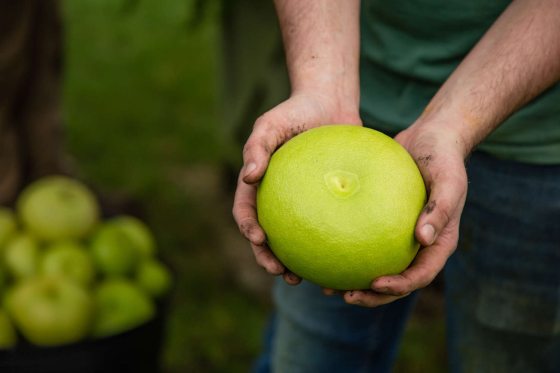
Grapefruit is not a true plant species per se, but rather a hybrid of the sweet orange and pomelo—two introduced citrus trees that first interbred accidentally on the island of Barbados. Hybrid grapefruits have been grown in the Longwood Conservatory for decades, where they can be seen growing in large planters on the Patio of Oranges in the East Conservatory. The trees are a special variety called Citrus ‘Oroblanco’, which is a cross between Citrus maxima ‘Siamese Sweet’ and Citrus paradisi. We harvested more than 200 of these delicious fruits from our 13 grapefruit trees for the creation of Longwood Seasons: Oro Blanco.
Peaches and Nectarines
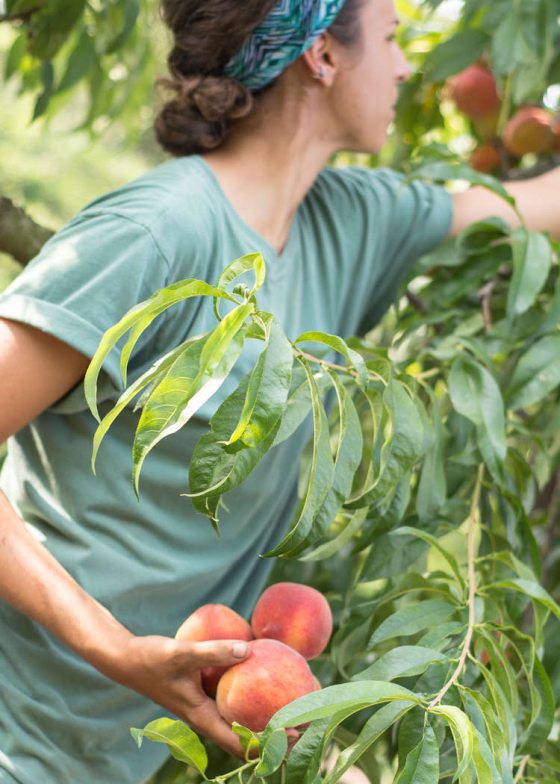
Peaches and nectarines were used in the brewing of Longwood Seasons: Fruit House Ale in 2016 and are actually the same plant species: Prunus persica. Hundreds of different varieties or “cultivars” have been developed from the original hairy peach, including the famous hairless nectarine (P. persica var. nucipersica), of which Pierre S. du Pont was particularly fond. Today, in his honor, we grow nectarine trees in distinctive “espaliers”—an ancient horticultural practice that trains trees to grow horizontally rather than vertically. We are harvesting nectarines this week for an upcoming brew that will debut later this year.
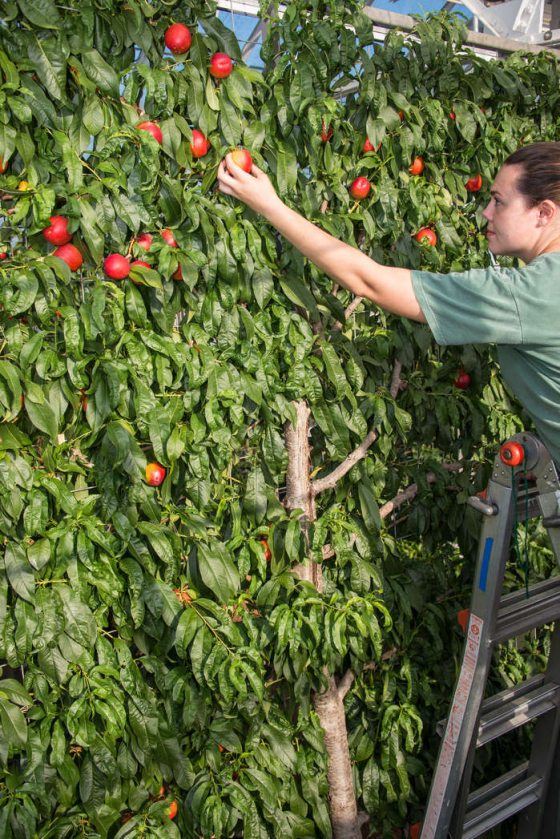
Previous Victory brews have included honey, lemons, and cherries from our Gardens, and you may see some of these ingredients return to flavor future brews!
Cherries
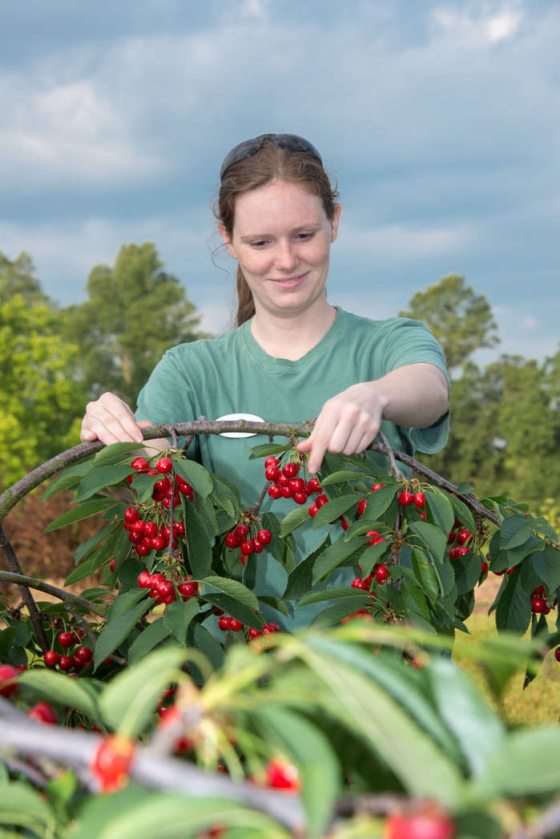
We harvested more than 100 pounds of dwarf sour cherries (Prunus ‘SK Carmine Jewel’) and sweet cherries (Prunus avium ‘Ridgewood’ Black Gold™) from our Idea Garden to make Longwood Seasons: Cherry Oatmeal Stout, which debuted in 2017. Bakers will be familiar with both sweet (Prunus avium) and sour cherries (Prunus cerasus) for their use in pies, tarts, and other desserts. The genus Prunus comprises many trees and shrubs with edible fruits, including cherries, plums, nectarines, apricots, and even almonds. For our brew, we juiced the cherries, which was then added to the almost black stout, giving the taste of rich, dark malts with hints of marzipan and cherries and a nice, light backbone of vanilla.
Lemons

Lemons are another hybrid citrus and are thought to be a cross between sour orange (itself a hybrid) and citron. Lemons’ exact time and place of origin is unknown, but they have been grown since antiquity, and have been used extensively in brewing. Their sweet and sour taste pairs well with hops, and their natural antibacterial properties can further improve the shelf life of the finished product.
Longwood’s Meyer lemon trees are grown in our production greenhouses and go on display seasonally in the Estate Fruit House. They are themselves a cross between a true lemon and a mandarin or orange.
Honey
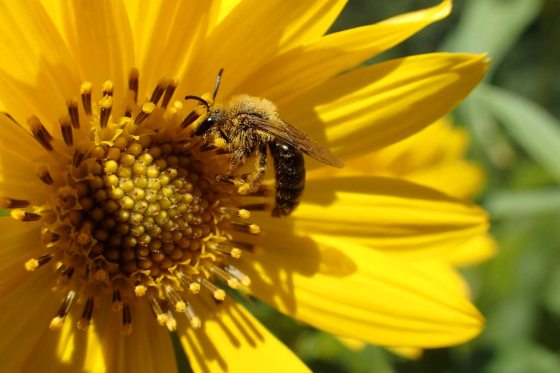
While honey isn’t a botanical ingredient per se, it does ultimately come from flower nectar. Longwood has about a dozen beehives on our property from which we harvest honey. This was used in the creation of our honey wheat beer, Longwood Seasons: Autumn Harvest, in 2015.
Honey has a long history as a flavoring agent in beer and can actually be used as a sugar source for yeast to produce mead. Interestingly, honey itself has potent antibacterial properties, and does not spoil. If sealed properly, jars of honey can last for thousands of years!
Honey also can taste differently depending on the floral source of the nectar from which it is derived. Certain flowering trees and plants—such as sandalwood, clover, and blueberry—are well-known for producing distinctively flavored “monofloral” honey. Given the enormous variety of flowering plants growing at Longwood, our bees have considerable options, and produce “polyfloral” honey as a result. Individual honeybees will fly up to four miles from their hive in search of nectar, which puts the entirety of our Gardens (including much of the Conservatory when the windows are open) well within their foraging range.
In many ways, the creation of every variety of Longwood Seasons brews is similar to the creation of Longwood honey; assembled from a wide variety of different botanical ingredients, the end product becomes much more than the sum of its parts. And just as the different hops, malts, and gruits impart their own unique flavors to the brew, it takes the skill of a master brewer to create a truly balanced flavor profile from so much “pollen.” By combining traditional brewing techniques with bold innovation, Victory Brewing and Longwood have created a series of beers that are at once new and familiar to horticulturists and beer lovers alike.


